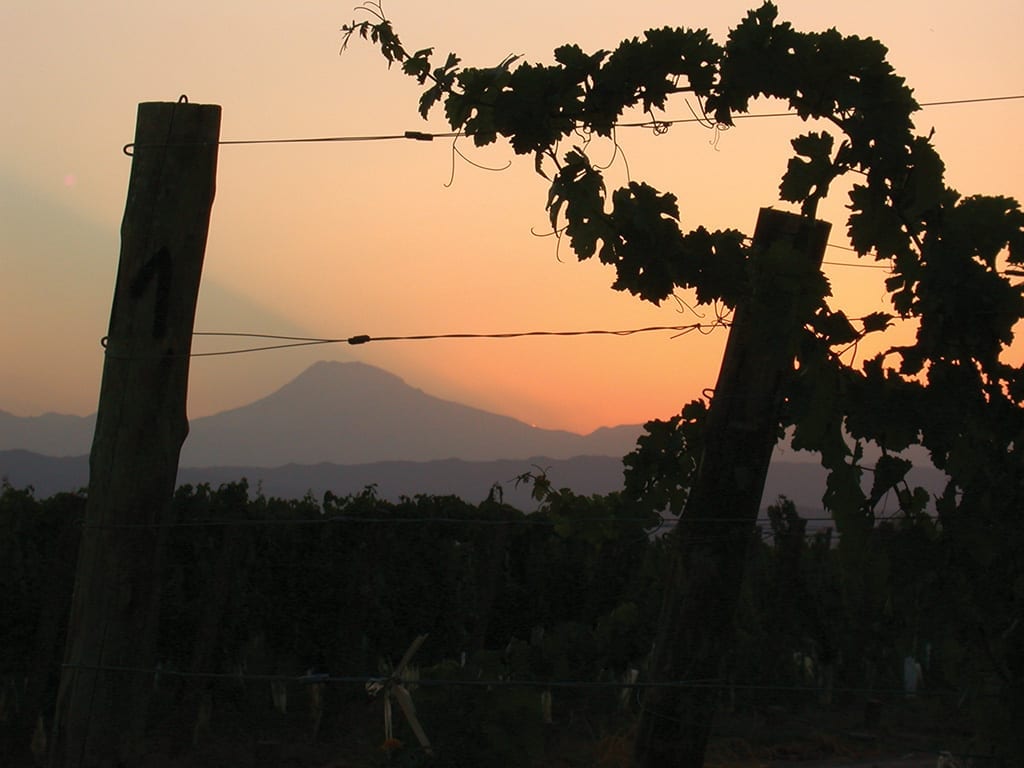The next time you buy a Malbec from Mendoza, check if the label mentions the vineyard’s elevation, and—here’s a hint—use 3,000 feet as your benchmark.
How Does Elevation Affect Wine?
We often use the word terroir when discussing a wine region, and one of the most important components of terroir is elevation. Elevation directly affects the temperatures in the vineyard (cooler at high altitudes, warmer at lower altitudes) and the amount of sunlight that reaches the grapes. Therefore, elevation plays a large role in what grape variety you will find growing in that area: some grapes thrive with ample sunlight while other varieties require less; some grapes love warmer temperatures, while others benefit from a chill.
We see a great example of how elevation affects grape varieties in Italy, where the Apennine Mountains run the spine of the country, giving each region different elevations that help decide where certain grape varieties will be planted.
High Altitude in Mendoza, Argentina
I also found elevation to be especially important in Mendoza, Argentina. Mendoza has a large fluctuation of altitudes, with some vineyards reaching 3,000 feet and higher. Alta Vista Winery in Mendoza has done significant study on this topic and found 3,000 feet to be the critical point where potentially “good” wines are separated from potentially “great” wines. At 3,000 feet above sea level, vineyards benefit from their proximity to the Andes Mountains, which give the vineyards cold winds at night, less fertile soil, and result in fewer grapes produced. While this doesn’t necessarily sound pleasant, they are in fact ideal conditions for producing high quality wines that show more concentration, flavor, and complexity.

Alta Vista prides itself in ensuring all their vines are planted at a minimum of 3,000 feet. They also have planted all their vines in the two most premium sub-zones of Mendoza: Valle de Uco and Lujan de Cuyo. These high elevated vineyards allow the grapes to ripen very gradually. This results in highly concentrated dark fruit which is well balanced by the fresh acidity. The powerful tannins and well-integrated alcohol help add to the very long finish.
Remember to check your label next time you buy a wine, and if the producer mentions high elevation at 3,000 or higher, you might just have a winner.




